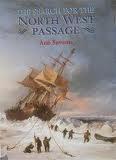
|
PREHISTORIC CULTURES OF NORTH AMERICA |
| S. Crouthamel, American Indian Studies/Anthropology, Palomar College |
| COURSE ORIENTATION: AIS 130/ANTH 130 |
INTRODUCTION
Prehistoric Cultures of North America focuses on the development of
Native American cultures before the onslaught of immigrants after AD 1492.
Native Americans include American Indian, Aleut, Yupik and Inuit (Eskimo)
people. The course title does reveal various biases due to the view that only the
European has a history.
Therefore, Ancient Cultures of North America might be more inclusive course
title. Further, America and American are
labels given by Europeans. One could ask, "What did Native Americans
call America before AD 1492?" Commonly the response given by Native Americans is 'ours' or 'Turtle Island',
a term based upon Northeastern mythos.
Fundamentally, non-Indians were initially baffled by the very existence of America and
its indigenous people. Non-Indians have ignored the sovereignty of contemporary Native
American people. Europeans in particular, distorted reality further by referring to the
Americas as the 'New World' vs. the 'Old World'. Contact or explorations before
AD 1492 are discounted or ignored so that prehistoric equates to pre-Columbian. Norse contact and exploration after ~AD
982 is certain but reliable archaeological data indicates minimal colonization in the harsh conditions around Greenland, the Labrador Coast and
Newfoundland. If the Norse explored any further into the interior of North
America, the archaeological evidence is meager and unreliable. Further,
speculation of any other contacts before AD 1000 via the Atlantic or Pacific
Ocean has not been substantiated by solid or reliable data. Similarities of
artifacts and cultures between the ancient Americans and some 'Old World'
cultures are tantalizing, but support for Trans-Oceanic journeys by ancient Egyptians or Chinese
are not substantiated. The issue of independent invention vs. diffusion
is still worth exploring, especially with later innovations like the bow and
arrow or domestic cotton. Recently, coastal theories have come in the vogue,
again, with more reliable dates. Europeans after AD 1492 were in search of a route
to Asia but ran into a continent that they initially thought was part of
Asia. Later, Europeans continued to seek a 'Northwest Passage' to Asia. The existence of
another continent or 'New World' became evident by AD 1600, but Europeans
continued to be baffled by the ' New People' that were being called 'Indians'.
Some Europeans thought that American Indians were one of the 'Lost Tribes' of
Israel;
others speculated origins from Asia, especially for the
Eskimo (Inuit) and Aleut peoples. Strange legends about 'Lost' cities or
civilizations were popular among early European explorers and usually were
coupled with the possibility of vast amounts of gold and other riches.

How Europeans became confused and ignorant about an entire hemisphere? Did Native Americans know of the rest of the world? Unfortunately two great libraries were destroyed and they may have had better clues as to the relative awareness of the world in ancient times. One library was in Alexandria and the other was that of the Maya in Yucatan.
The text for this course, A Prehistory of North America by M.Q. Sutton, is a survey of archaeological finds and refers to many sites, cultural traditions and culture periods north of Mexico. Native Americans were present in all the Americas and civilizations were extent throughout the continent. At Palomar we have a course on Mesoamerican Prehistory and a History of the Americas taught that both cover some of the other ancient Native American civilizations. In effect the true picture of ancient Native American cultures is incomplete and lacking. In part this is due to the immensity of data, but also a European American bias favoring North America.
COURSE ORIENTATION
This course is totally online and primarily self-paced. First print the syllabus and semester schedule/ due dates. You should create a basic notebook as with any college course. Your first 'homework' or task is to read the text and notes for Test #1. Print the syllabus to see the notes and appropriate readings in the text that are pertinent for the two tests. You can print your tests and fill them out offline, but you must return to post them online. Since, the grading is very specific you must let me hand grade the test online, ignore the initial score. I must also grade your essays. Test #2 deals with the second half of the course readings and notes; and is handled the same.
The practicum is printed and taken offline, but again you must come back and post it online. Note that you have 'practice practicum images' ( 6 objects) set up with a discussion forum. Read the instructions first, then participate or view the discussion to understand how you are to respond. Then print the practicum and fill it out offline. There are 20 Practicum Images to go with your practicum. Again, I have to hand grade the practicum.
Finally, you have a research paper which is an Archaeological Site Assessment. This is basically an assessment of one archaeological site of your choice but it is not a formal EIR or EIS. See the instructions, but do not forget references. You can e-mail the paper or submit it in Blackboard.
If you have questions feel free to e-mail or set up an initial phone/computer session or an office consultation.
Copyright © by S. J. Crouthamel